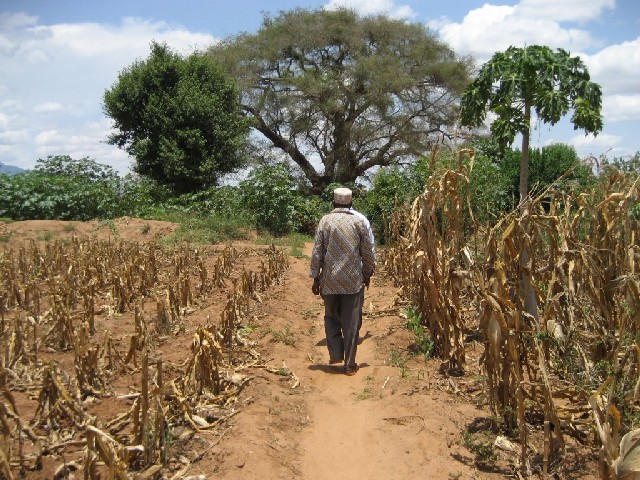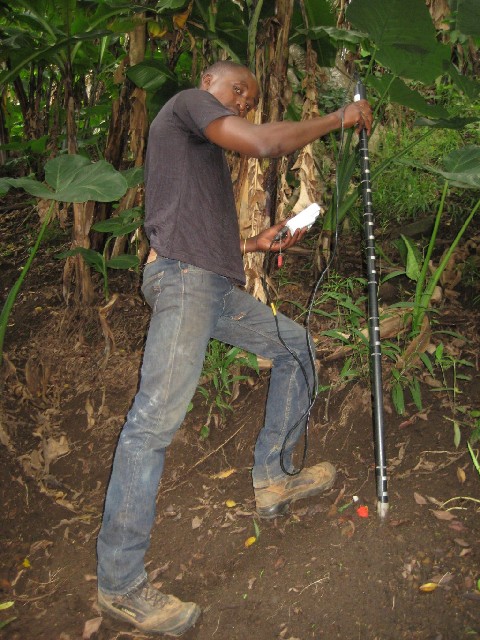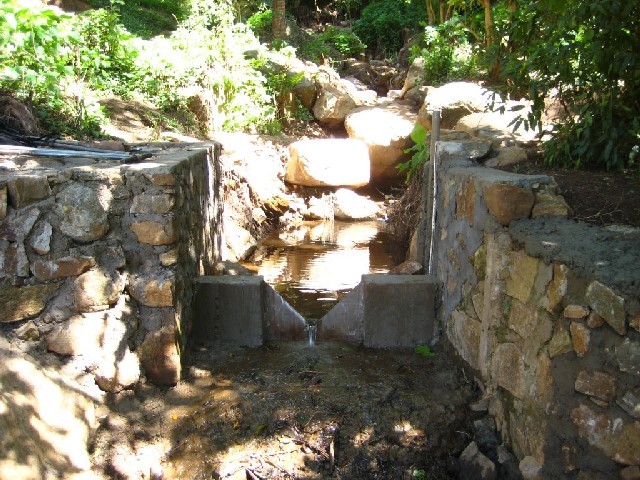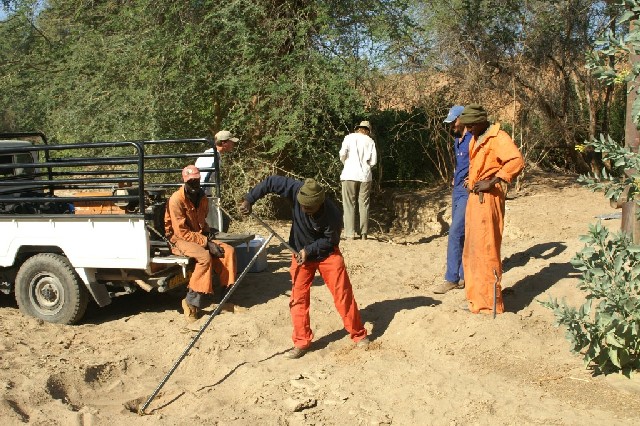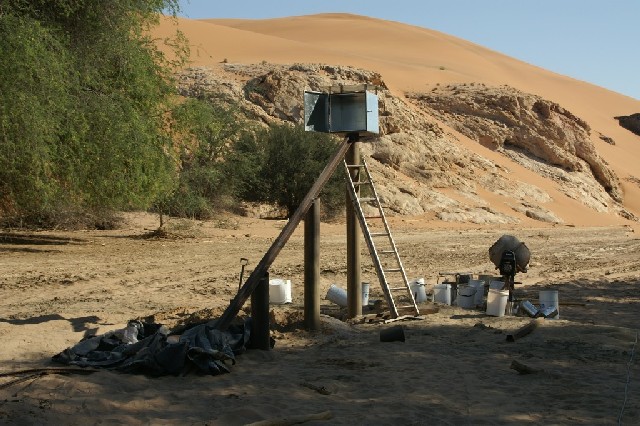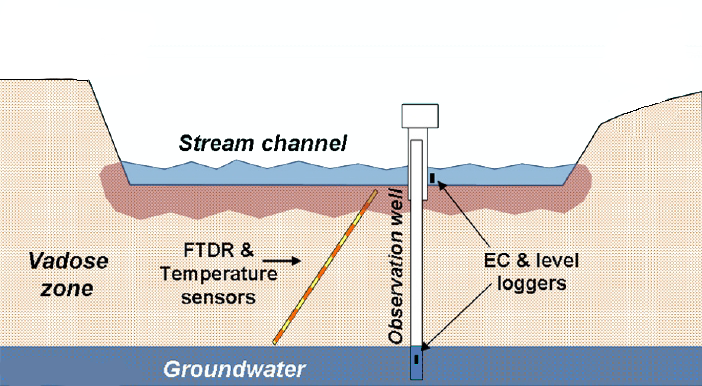Other research activites
Apart from my PhD, I was involved in a number of hydrological research projects, e.g. measuring water balances in mountanous headwater catchments in Tanzania or investigating groundwater interaction of ephemeral rivers in Namibia.
Surface water hydrology
Background: UNESCO-IHE - Institute for Water Education runs numerous research projects as part of an initiative to improve the livelihood of rural communities in Africa and to involve local resources in water management issues. The SSI (Small-holder System Innovations in Integrated Watershed Management) project focuses on semi-arid areas of sub-Saharan Africa, where 95% of all agricultural land is used for rain-fed agriculture. Local organizations are facing great challenges in allocating the limited water resources in such agro-ecosystems. The main research objective is to increase the understanding and to develop solutions for good river basin management.
Study description: I was working in the Makanya catchment in the Pangani basin, which borders the Pare Mountains of Eastern Tanzania. We investigated the runoff responses, surface water-groundwater interaction and distribution of water during the rainy seasons. This was accomplished constructing stream gauges (Fig. 8), monitoring water chemistry and measuring the soil saturation in the adjacent hillslopes (Fig. 9). It was found that most runoff is generated from groundwater exfiltration and much of the actual rainfall is intercepted, evapotranspirated or lost via overland flow. Only a small portion of the water balance is preserved in the near-ground aquifers and available for irrigation.
Publications:
Kessler, T.C. (2008). Investigaion of runoff generation responses in steep, semi-arid headwater catchments, South Pare Mountains, Tanzania. Diplom thesis, UNESCO-IHE, Delft, The Netherlands. 90 pages (pdf).
Bohté, R., M.L. Mul, T.A. Bogaard, H.H.G. Savenije, S. Uhlenbrook, and T.C. Kessler (2010). Hydrograph separation and scale dependency of natural tracers in a semi-arid catchment. Hydrol. Earth Syst. Sci. Discuss., 7, 1343–1372 (pdf).
Groundwater hydrology in ephemeral rivers
Background: Gobabeb is an international training and research station in the center of the Namib desert at the Northern boundary of the sand desert. The Kuiseb river marks a sensitive, elongated ecosystem, which es fed by the aquifer underneath the mostly dry river bed. The research project WADE (Flood Water Recharge in Alluvial Aquifers of Dry Environments) is looking at the various environmental processes that might control aquifer recharge as well as the natural, social and economic elements that determine water availability and sustainability.
Study description: The overall aim of the work was to determine recharge and water table dynamics in the alluvial aquifer beneath the river bed (Fig. 12). We collected field data at two boreholes (one in the main river channel and the other in the flood plain). TDR (Time Domain Reflectometry) probes in the two boreholes monitor infiltration, transmission losses, percolation, conductivity and effective porosity at a series of depths. In addition, we took regular water samples for tracer analysis, perfomed site characterization, mapped vegetation patterns and analysed the geomorphological records. The entire campaign ran over several seasons to capture periods of actual water flow. As per the project aims, we wanted to fill the information gap about what happens between the surface flow and the groundwater - what are the factors that influence how much water from floods are able to replenish the underground aquifers. These factors directly impact the long-term water supply, which is a critical variable for the socio-economic development of the various users along the Kuiseb River.
Literature:
Amiaz, Y., S. Sorek, Y. Enzel, and O. Dahan (2011). Solute transport in the vadose zone and groundwater during flash floods. Water Resour. Res., 47, W10513, doi:10.1029/2011WR010747.
Thermal remediation in porous media
Study outline: As research assistant, I worked at the VEGAS - Research Facility for Subsurface Remediation and was involved in the project Large-Scale Physical Models of Thermal Remediation of DNAPL Source Zones in Aquifers. We constructed an experiment at technical scale to monitor contaminant remediation in a heterogeneous, variably saturated porous medium. The aim of the investigations was to specify the remediation boundary conditions and opportunities. We filled the test container with two layers of confined, medium permeable sediments overlaid by a highly permeable unsaturated zone. A dense network of TDR and temperature measurement equipment was installed accordingly. Finally, a well-defined DNAPL contaminant source was injected into the modelled aquifer.
Results: It was shown that even low permeable, saturated soil zones can be remediated effectively using thermal wells (electrically operated heaters), if the contaminant source zone is heated from the outside to the inside and the heated area is controlled by a soil vapour extraction system.

